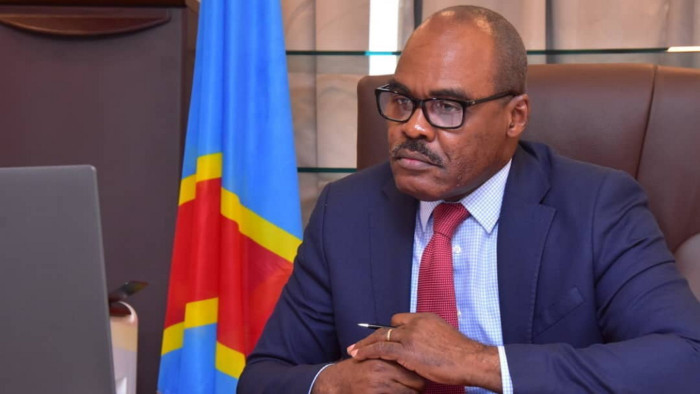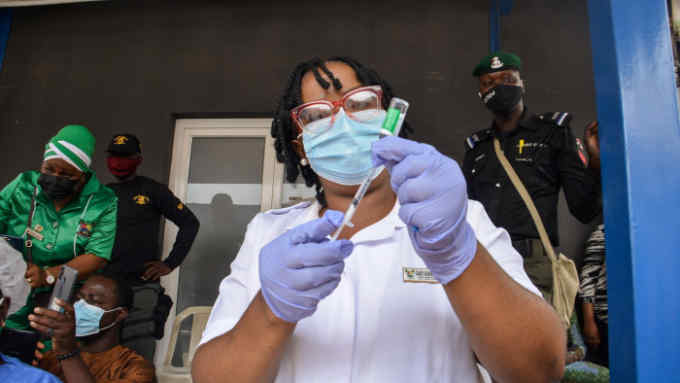DR Congo seeks to ‘reclaim history’ with economic reforms

Roula Khalaf, Editor of the FT, selects her favourite stories in this weekly newsletter.
The finance minister of the Democratic Republic of Congo longs for the days when his country was pushing forward as an African industrial hub.
“In this country, we made batteries for our vehicles; we used to make televisions, and exported them . . . we produced vehicles here [that] we exported,” says Nicolas Kazadi, the minister and a former central bank official of the mineral-rich country.
“All of that we lost” in the 1980s, he laments, following “complete plundering, political instability” and “macroeconomic problems”.
“So, we have a history that we are trying to reclaim,” he explains in an interview, as he pushes for “a big, ambitious reform agenda” backed by Washington-based lenders.
DRC is the third most populous country in sub-Saharan Africa, with 92mn people and enormous mineral wealth, including key components for the modern battery industry. But it has remained one of the poorest countries in the world after failing to achieve much sustained growth since independence from Belgium in 1960, partly due to armed conflicts and an elite accused of capturing the nation’s natural resources.
“A long history of conflict, political upheaval and instability, and authoritarian rule have led to a grave, ongoing humanitarian crisis,” according to the World Bank. Some 73 per cent of the population lived on less than $1.90 a day in 2018.
In his June 30 independence day speech, president Felix Tshisekedi, who took office after a disputed result in 2019, said his government had embarked on “a new fight, that of promoting inclusive growth to fight poverty”.
Kazadi, a former official with the UN Development Programme, introduced an agenda to achieve this using criteria established by the Millennium Challenge Corporation (MCC), a US independent foreign aid agency. “It is part of an effort to improve,” he says.
According to the MCC’s scorecard, the central African country has already hit some milestones, such as strengthening fiscal and trade policies, and increasing the roles of women in the economy. But DRC still falls short in areas including regulatory quality, the rule of law, and controlling corruption.
Telecom operators, for example, complain about a new tax imposed on them through phone usage, which could raise the overall fiscal burden they face to about 46 per cent of revenues. “The tax is a setback for DRC’s fledgling digital economy, a blow to tens of millions of ordinary Congolese mobile users, and a major concern for international companies,” says a senior telecoms executive, explaining that the tax aims to replace an unpopular levy on handsets.
“They are concerned — it is normal,” Kazadi says. “I respect their right to discuss and challenge this new tax.”
But, for regional bankers, DRC has become an attractive market. This month, Kenya’s KCB Group acquired a majority stake in one of the DRC’s biggest lenders, Trust Merchant Bank.
Equity Bank, another top Kenyan lender, snapped up BCDC, DRC’s second-largest bank, two years ago.
“The DRC has the potential to ‘succeed big’,” according to James Mwangi, chief executive of Equity Group. “We believe with economic and political reforms the benefits will trickle down to the people.”
Kazadi agrees, pointing to the IMF’s recent move to provide $203mn to support DRC’s balance-of-payments needs, with the lender stressing that the country’s macroeconomic environment “has improved” over the past two years. “The authorities have adopted prudent macroeconomic policies,” the IMF said in June — mainly by halting central bank financing to the government. In June, the World Bank approved grants of $250mn for development policy for “foundational economic governance reforms”.
Economic growth rebounded to 6.2 per cent last year, up from 1.7 per cent in 2020. It is forecast by the IMF to accelerate to 6.4 per cent this year, the fastest rate among Africa’s largest economies and almost double the regional average. Still, the IMF warned that “fragility continues to hinder inclusive growth as 72.5 per cent of the population is in poverty”.
Kazadi argues that this could be tackled by exploiting DRC’s significant hydroelectric potential and over 70mn hectares of untapped arable land.
As mining exports increased — driven by the global demand for coltan and cobalt, which are used in electric vehicle batteries and smartphones — the current account deficit fell from 2.2 per cent of gross domestic product in 2020 to 0.5 per cent in 2021, and is expected to be turned into an 0.8 per cent surplus this year, according to the African Development Bank.
But while Congo has become the world’s biggest producer of cobalt and Africa’s biggest copper exporter, Kazadi hopes to attract non-mining investors. “Unfortunately, the mining sector is predominant and this sector is still too primary — we produce, we export. There needs to be more added value, more local processing, that is an axis of important economic development,” he says.
An eventual aspiration is that batteries — for which DRC provides raw materials such as cobalt, tantalum and nickel — could be produced, or assembled, here. “We can develop batteries and battery components locally — we are making good progress,” Kazadi says, of a partnership with its southern neighbour Zambia, which borders the mineral-rich province of Katanga.
“We are planning to make a free-trade industrial zone straddling the two countries, where we are going to set up the first production centres,” using Congolese minerals, he explains.
“That’s what we’re doing and that’s what will gradually take us from the mining sector properly into the industrial sector. This is how we will make our economy more solid.”

Comments